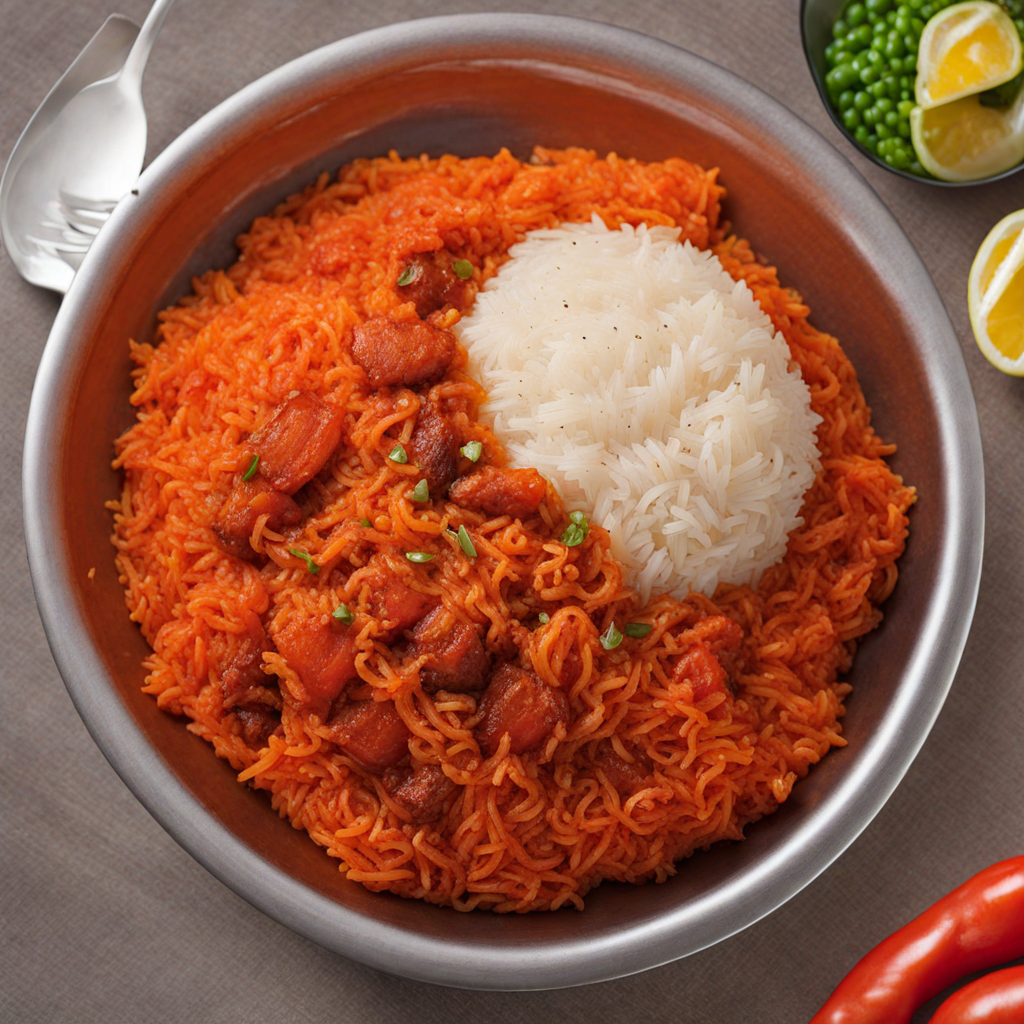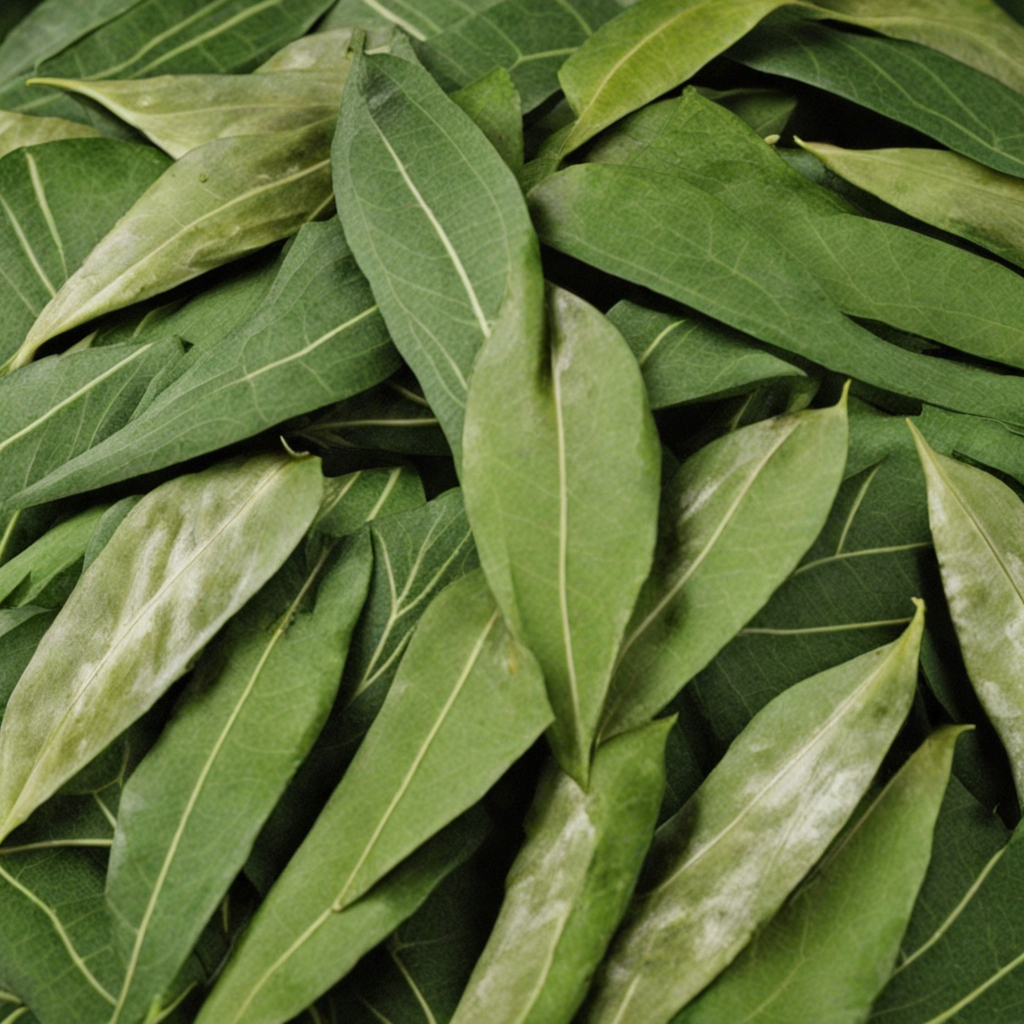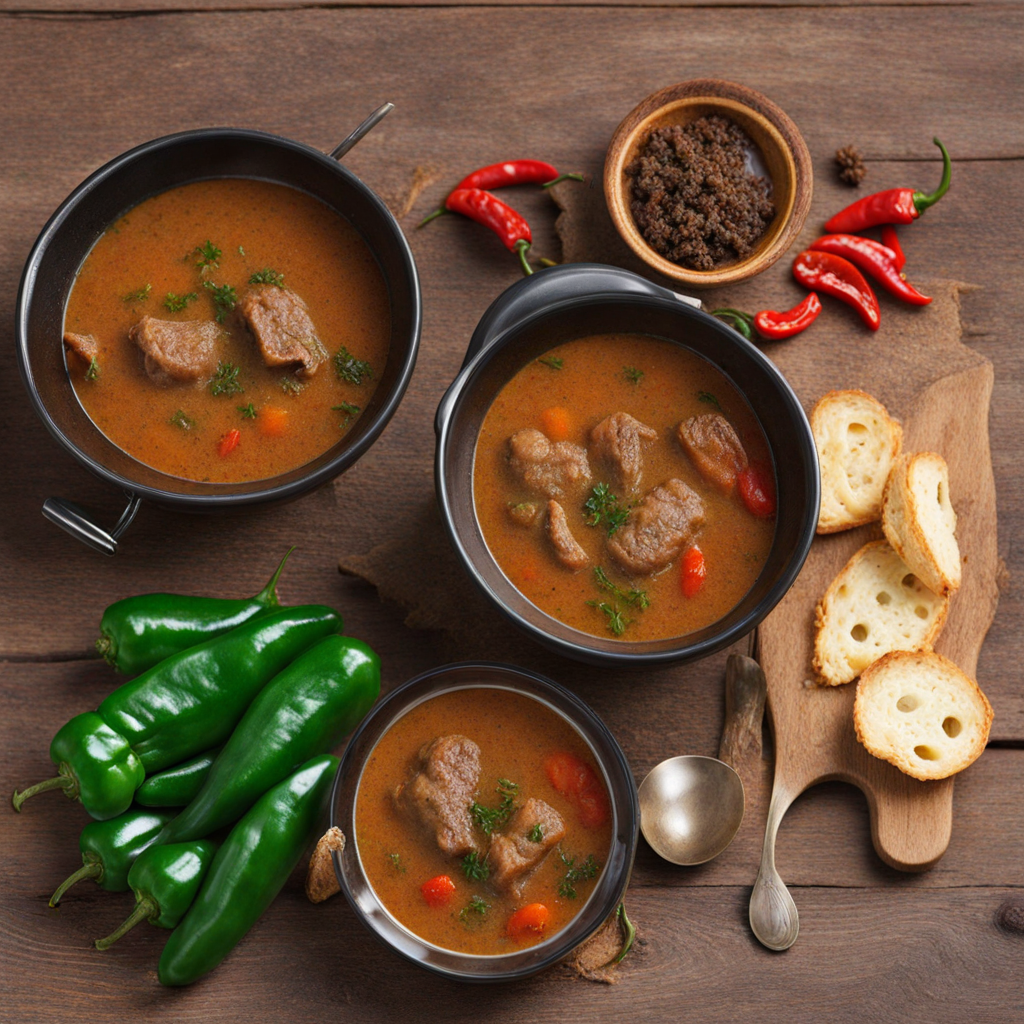Gabonese Jollof
Gabonese Jollof is a vibrant and aromatic dish that embodies the rich culinary heritage of Gabon. Unlike its West African counterparts, this version of Jollof rice showcases the unique flavors of Central African ingredients. The rice is cooked in a delectable blend of tomatoes, onions, and bell peppers, creating a lush, red base that is both visually appealing and packed with flavor. The dish often incorporates a variety of spices, such as garlic, ginger, and a hint of chili, which enhances its depth and complexity, making each bite a delightful experience. Traditionally, Gabonese Jollof is accompanied by a medley of protein options, including grilled chicken, fish, or beef, which are often marinated in local spices before cooking. The proteins contribute an additional layer of flavor, complementing the spiced rice beautifully. Vegetables such as carrots, green peas, and plantains can also be added, providing not only color but also a balance of sweetness and texture to the dish. The result is a harmonious blend of tastes that reflect the vibrant culture and culinary traditions of Gabon. The presentation of Gabonese Jollof is often a feast for the eyes, served in a large platter that encourages sharing among family and friends. The dish is usually garnished with fresh herbs, and sometimes a squeeze of lime or lemon juice is added just before serving, brightening the flavors even further. Each mouthful is a celebration of Gabonese cuisine, inviting food lovers to indulge in a new taste experience that is both satisfying and deeply rooted in the local culture.
How It Became This Dish
Jollof Gabonais: A Culinary Journey Through Gabon's Rich Heritage Origin of Jollof Gabonais Jollof Gabonais, a delightful and vibrant dish, is a quintessential part of Gabonese cuisine. Its roots can be traced back to the broader jollof rice tradition found in West Africa, notably in countries like Senegal, Nigeria, and Ghana. The word "jollof" is believed to derive from the Wolof people of Senegal, whose culinary practices have significantly influenced the region. While each country boasts its unique take on jollof rice, Gabon presents a distinctive interpretation that reflects the country's own cultural nuances, ingredients, and culinary practices. The Gabonese version of jollof rice is characterized by its aromatic blend of spices, the use of local ingredients, and a cooking technique that emphasizes both flavor and texture. The dish typically consists of rice cooked in a rich, flavorful tomato sauce, complemented by vegetables, proteins, and often a hint of spice. While the core ingredients are similar across the West African jollof spectrum, Gabonese jollof stands out due to the inclusion of local produce and spices, making it a dish that resonates with the land and its people. Cultural Significance Jollof Gabonais carries profound cultural significance beyond its culinary appeal. In Gabon, food is a central part of social life, and meals often serve as a means of bringing families and communities together. Jollof rice is particularly popular during celebrations, gatherings, and communal feasts, symbolizing unity and shared heritage. Its preparation is often a communal affair, with family members coming together to cook, share stories, and bond over the process. This communal aspect of cooking reinforces social ties and preserves traditional cooking methods passed down through generations. In Gabon, the dish is not only a staple but also an emblem of national pride. As with other jollof variations in the region, Gabonese jollof rice has found its place in national discourse, often sparking friendly rivalries over whose version is the best. This rivalry showcases the importance of food in cultural identity, where culinary practices are closely tied to notions of heritage and community. Moreover, the dish reflects Gabon's rich biodiversity. Gabon is endowed with lush rainforests and fertile lands that provide an abundance of fresh produce, including tomatoes, onions, green peppers, and a variety of spices. The incorporation of these local ingredients into jollof rice not only enhances its flavor profile but also illustrates the connection between food and the environment. As such, Jollof Gabonais is a celebration of the country’s natural resources and the culinary creativity of its people. Development Over Time The evolution of Jollof Gabonais can be understood through several key historical and cultural developments. The arrival of various ethnic groups in Gabon, including the Fang, Punu, and Nzebi, has contributed to the diverse culinary landscape of the country. Each group brought its own culinary traditions, ingredients, and cooking techniques, which have melded over time to produce a unique Gabonese identity. Colonial history also played a role in shaping Gabonese cuisine. The influence of French colonialism introduced new cooking techniques and ingredients, such as garlic and certain herbs, which have since been integrated into traditional dishes like jollof rice. This hybridization of flavors and techniques has enriched the culinary tapestry of Gabon, allowing for the development of Jollof Gabonais that reflects both indigenous and colonial influences. In the late 20th and early 21st centuries, globalization and the diaspora have further impacted the evolution of Jollof Gabonais. As Gabonese communities migrated abroad, they took their culinary traditions with them, adapting recipes to incorporate locally available ingredients while maintaining the essence of the dish. This has led to an increased popularity of Gabonese cuisine in other parts of the world, where Jollof Gabonais is often featured at cultural events and festivals, promoting a deeper appreciation for Gabonese culinary heritage. Contemporary Variations and Globalization Today, Jollof Gabonais continues to evolve, embracing contemporary culinary trends while honoring its traditional roots. Chefs and home cooks alike experiment with different proteins, such as chicken, fish, or vegetarian alternatives, as well as various spice blends to suit individual tastes. The dish often incorporates side accompaniments like fried plantains, grilled meats, or salads, offering a well-rounded, flavorful meal. With the advent of social media and food blogging, Jollof Gabonais has gained visibility beyond Gabon’s borders. Food enthusiasts and chefs showcase their interpretations of the dish, sharing recipes and cooking techniques that highlight its versatility. This has not only sparked interest in Gabonese cuisine but has also fostered a sense of pride among Gabonese people, both at home and in the diaspora. Moreover, the rise of culinary tourism has contributed to the dish's popularity, as visitors to Gabon seek authentic experiences through local cuisine. Restaurants and food markets in Gabon now prominently feature Jollof Gabonais, catering to both locals and tourists alike. This growing interest in Gabonese culinary traditions ensures that Jollof Gabonais remains a vibrant part of the country’s cultural identity, while also adapting to modern tastes and trends. Conclusion In essence, Jollof Gabonais is more than just a dish; it is a reflection of Gabon’s rich cultural heritage, communal values, and culinary creativity. From its origins rooted in the diverse jollof traditions of West Africa to its contemporary interpretations, this dish embodies the spirit of Gabonese identity. As it continues to evolve and gain recognition on the global stage, Jollof Gabonais serves as a delicious reminder of the importance of food in forging connections, preserving heritage, and celebrating community.
You may like
Discover local flavors from Gabon







